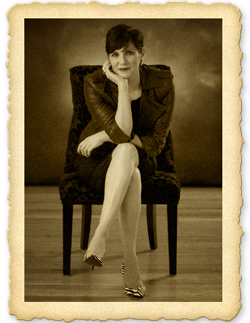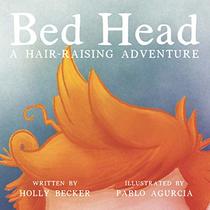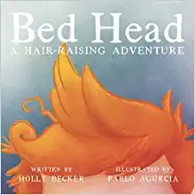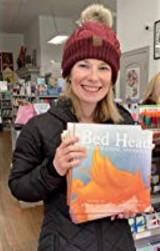
An Interview with Deanna Raybourn by Mirah W. (mwelday)
Several years ago a friend recommended the Lady Julia books to me and Deanna Raybourn instantly became one of my favorite authors. Recently I joined the twitter-sphere and one of the first people I chose to follow was Deanna Raybourn. I was so happy to find she was personable and willing to communicate with readers. Her posts are fun, endearing, intelligent, and creative. These same characteristics are in her novels and her characters come alive on the page. I recently reached out to Deanna via twitter and asked if she’d be interested in an interview for PaperBackSwap. I am so happy she agreed and hope you enjoy the following Q&A. And her generosity extends beyond just this interview, so keep reading!
MIRAH (MW): In 2013 you expanded beyond the Victorian era and the world of Lady Julia. FAR IN THE WILDS and A SPEAR OF SUMMER GRASS are principally set in Kenya around 1920. CITY OF JASMINE takes us to Damascus. What brought about this new direction and how did you select your new settings?
DEANNA (DR): My publisher wanted me to take a break from Victoriana and gave me carte blanche to write whatever I wanted. It was daunting! I made a list of topics I read about for pleasure—I jotted down about thirty or forty items. Then I started circling a few that jumped out at me and tried to piece them together. The result was A SPEAR OF SUMMER GRASS. When my publisher asked me to continue with 1920s adventure novels, I started thinking about the Gothic novels I grew up loving—those of Mary Stewart, Victoria Holt—and I considered the settings I enjoyed most from those. Damascus was at the top of the list. Mary Stewart and Elizabeth Peters both set books there, and you cannot find a city more steeped in history. I also wanted to incorporate some of my own personal history. When I was a child, my parents hosted four young men from the Middle East, one of them a Bedouin. They were my first encounter with a culture so different from my own, and they were very gracious and kind. I wanted to weave that in, so Damascus was the best fit. I’ve also always been fascinated by the exploits of Lawrence of Arabia, so a snippet of his story went into the pot as well.
MW: My family hosted a student from Brazil when I was a sophomore in high school and I feel the same, getting to know her was my first experience with someone from a culture unlike mine. Going to Brazil and staying with her family is when I became almost obsessed with learning about other cultures and traveling. Your novels are set in a variety of locations. Once you have selected the locations for your work, what type of research goes into your writing process so it feels authentic? I’m thinking here primarily of the hunting scenes and descriptions of Kenya and Damascus. I’ve never been to either place but your writing made it feel real to me.
DR: Thank you—I’ve never been either! However, I do a LOT of armchair traveling. I love to read travel memoirs, and I’ve learned to track down the childhood reminiscences of authors who grew up in exotic locales. Their writings are full of sensory detail and interesting characters because children are hugely observant of the smaller stories we tend to overlook. Adults will often discuss a country’s politics while a child will tell you about the pets they had, the words they learned, the folklore they were told. It gives a much more rounded picture of a culture if you can see it through a child’s eyes. I also start my research in the children’s section of the library. Nonfiction books for kids give a brief, broad history of a region, and from there it’s simple to narrow your focus in the books for adults. Otherwise, you can end up wading through fourteen centuries of backstory to get to what you need to know—lovely if you have the time to research that thoroughly, but usually that isn’t the case. The other trick I use is asking friends of mine who travel to share their experiences and travel photos. I have friends who go on safari regularly who were only too happy to let me log into their online albums and see candid shots of Africa. I also try to approximate visiting a place as much as I can from a distance. If I can’t get to France, but there’s a French specialty perfumer in a city I’m visiting, I’ll pay a visit. When I couldn’t get to Africa, I had a few directors of wildlife parks show me around and introduce me to the animals. It wasn’t the same as going on safari, but I did at least get to stand five feet in front of a lion as it roared at me, and that helped!
MW: Checking children’s nonfiction books is a great idea. And I imagine just being in roaring distance of a lion would be exciting! In addition to your strong locale descriptions, you give us strong characters. I love the character of Delilah Drummond. She is what my dad would have affectionately called a ‘spitfire’. And I love that she reappears in your novella WHISPER OF JASMINE, the prequel to your recent novel CITY OF JASMINE. Is there the possibility I’ll see her again in future projects?

DR: It was such fun to bring Delilah back in WHISPER OF JASMINE! She was one character I was very reluctant to turn loose of simply because at the end of A SPEAR OF SUMMER GRASS, her story wasn’t yet complete. She has a lot of baggage from the losses she’s suffered, and we know she still has a journey ahead of her at the end of SPEAR. I would love to write more of her, but there are no plans at present. I wouldn’t rule it out, though…
MW: I’ll keep my eyes peeled for her! I have come to expect strong female lead characters from you…Lady Julia, Delilah Drummond, Evangeline Starke. What characteristics do you think are essential when creating your female leads?
DR: I write strong women because that’s the position I try to live my life from. I don’t like to dither, and I don’t have a lot of patience with my own insecurities. Frankly, they bore me! I would much rather write about the women who are embodying the type of badassery I think we should engage in on a daily basis. Whether it’s sleuthing around to solve a murder or making the best of a bad situation or coming to terms with the ghosts of our past, when we tackle life instead of wallowing in indecision, I think it’s more compelling, more interesting, and more fun. So I believe strength and a strong sense of humor–along with a certain intrepid spirit–are essential for my heroines. They don’t always behave as I do; Delilah is a serial adulteress, for starter. But they always have good reasons for what they do. And if a character is misbehaving, as Delilah does, it’s because it comes from a place of unresolved pain. I won’t write a female lead who is a bitch for no reason. If she’s doing something awful, it’s because something awful happened to her and she hasn’t processed it properly yet. She’s stuck in a place where she’s lashing out, and she has to come to terms with that. And I make sure to show the reader what her pain is all about. I can’t expect a reader to come on board with her and invest in her journey if I haven’t demonstrated that she’s worth caring about.
MW: I love the word ‘badassery’! And having investment-worthy characters is an amazing skill. What are some of your favorite female characters created by other authors? What about these characters make them appealing to you?
DR: From the classics, I love Elizabeth Bennet and Jane Eyre for their spirit—and Jane Eyre is more spirited than many people give her credit for—and naturally, I want to put Fanny Price through a window. I’d far rather hang out with Emma Woodhouse who might be bossy but at least she’s got gumption. When I want a girl who is not very likeable, I am in the mood to read about Catherine Earnshaw and Amber St. Clare; when I want to see a somewhat limp character find her backbone, I turn to the narrator of REBECCA. And I love mysterious characters like MY COUSIN RACHEL. Was she a villainess? Was she a heroine? We don’t know, and that ambiguity is fascinating to me. I am also particularly fond of Amelia Peabody and Lucy Eyelesbarrow and Flora Poste. I like their forthright, matter-of-fact competence. There are at least a few dozen I could name, but I’ll stop now.
MW: I love Jane Eyre and could talk about her all day! Sometimes we’re lucky and you let us revisit characters we love in your work. I enjoy that characters are woven through your recent projects. In addition to Delilah I mentioned earlier, Evangeline has a connection with Ryder White, your male lead character in A SPEAR OF SUMMER GRASS. While he’s not in CITY OF JASMINE, he is mentioned by Evangeline several times. What made you decide to go that route with your characters in these recent novellas and novels?
DR: After I wrote A SPEAR OF SUMMER GRASS, I was brainstorming CITY OF JASMINE and realized I could tie the two together to make the stories even more engaging for readers. Then I took it a step further and plotted out how to connect those two novels with future projects and past projects, and it was all just so much fun—like a giant logic puzzle! The more connections I forged, the more I wanted to create. I found all sorts of little things I had layered into previous projects that I was able to go back and exploit, things I hadn’t even intended to use again, but they fit so beautifully into what I wanted to do I had to make the most of them. And I’m not finished yet! Just last week I realized there are two more characters who have only appeared as minor figures in previous projects but whose stories I really want to tell at some point. Fingers crossed…

MW: I’m intrigued! Now I want to know who will return! In WHISPER OF JASMINE we are introduced to Evangeline and Gabriel, the main characters in CITY OF JASMINE. They have an instant connection with one another and make choices they wouldn’t have foreseen. Have you ever had an instant connection with someone or been affected by an event that led you to do things you never thought you would? How did that connection or event change you?
DR: My husband and I had a fairly instant connection when we met, but it wasn’t nearly as romantic as Evie and Gabriel’s! It wasn’t so much love at first sight as it was a feeling of complete and utter inevitability. I just knew that my life was going to be tied to his, and I accepted it. We were engaged within three months of our first date and married on my graduation day from college—something I would NEVER have imagined myself doing. I thought I’d wander off to Paris or Rome and scribble novels while having interesting love affairs and finally marry at about thirty. I was entirely shocked to find myself married at 22! But I adore him and he’s an amazing husband, so I’m rather glad I listened to the gut instinct that told me he was mine.
MW: That’s a wonderful love story! Love can be an amazing adventure all on its own. In CITY OF JASMINE, Evangeline and Gabriel are on an epic adventure. If you could pick any sort of adventure to go on, what would it be and whom would you take with you?
DR: Without hesitation, I can tell you I would love to go on safari in Kenya or Tanzania with my husband. He’s a great travel companion—my partner in adventure! And he’s never faked his death, so we have that going for us…
MW: Hold on, I’m having a fit of the giggles. Not faking his death is a good sign! In addition to the wonderful Evangeline, Aunt Dove is a marvelous character! I actually want an Aunt Dove of my very own to spend time with. If you had to pick one of your characters to spend time with, which character would it be and why?
DR: Oh, that is the least fair question you could possibly ask! I love Julia Grey, but she’s very like me, so I suspect I’d be bored with her because there wouldn’t be any surprises. And I’d be a little frightened of what Delilah might want to get up to…Aunt Dove would indeed be a hoot, and if she’s too busy dashing off somewhere interesting with one of her old lovers, I wouldn’t mind taking tea with Portia, Lady Bettiscombe. I imagine she has some very interesting stories to tell.
MW: Most novels have characters the readers like or dislike but what about from your perspective? They are all your creations but do you like or dislike them as readers might?
DR: It’s a very different perspective to what readers have. They can approach a character dispassionately and love or hate them; they can look at a bad deed committed by a character and call it a deal-breaker. But I see what goes on behind the bad deeds. I know what they’ve suffered and why they act up sometimes, so I might have a little more compassion for them. Occasionally, readers will surprise me and have more patience with a piece of nastiness than I will because their life experience has made them more sympathetic than I might be. Everyone draws the line of acceptable behavior in a slightly different place. And I take a sort of unhealthy delight in my villains. I like to find something to enjoy about them! The twistier I can make them, the better. I don’t expect readers to particularly like them though.
MW: Having a variety of characters is what makes a good book so much better. In addition to connecting with characters, as a reader, I enjoy being transported to other places (times and locations) through novels. This is one of the reasons I enjoy your work so much. On the flip side of that, what do you enjoy most about being an author?
DR: I love the fact that I can immerse myself so thoroughly in a place I’ve created wholly out of my own imagination. It’s like the most glorious game of “pretend” that you played as a child, only no one tells you to clean up your toys and come to dinner. You can just keep playing, moving the people around and giving them problems to overcome and dangers to face. And I love bringing readers into that magical place and sharing the experience with them. When you can take someone out of their everyday life for just a little while, that’s an extraordinary thing, and I feel privileged to be able to do it for a living.
MW: You are (gloriously) in contact with your readers via facebook, twitter, your website and blog and on behalf of your readers everywhere I say ‘Thank You’ for that. How do you think social media has changed the literary world? Is it a change for the better?
DR: Thank you! I think the change is almost entirely for the better. Writing is such an isolating occupation. My pal Susanna Kearsley likens Twitter to our water cooler; we emerge, blinking, from our writing caves and catch up with each other and the world. We get to be human again for just a little bit before we skitter back to work. And I love connecting with readers! It’s the best feeling to be struggling with a scene and put it aside to check in with social media and find someone’s tweet to you telling you how much they love your work. Or wrestling with a deadline and finding a writer friend has a project due exactly the same day and you can encourage each other by holding each other accountable. It’s lovely to get out of your own head for a little bit—and when you share yourself with readers they do appreciate it tremendously. That’s definitely worth the occasional bad apple who just wants to spread their sourness.
MW: We do appreciate it! Just a few weeks ago on twitter you reached out to followers for help identifying someone you had on your ‘inspiration board’…how does the inspiration board process work for you?
DR: When I’m preparing to write a book, I scour magazines for photos that somehow evoke a character or setting or mood for me. When I have a file stuffed full, I pull out a large piece of tagboard and my glue sticks and get to work. There’s no particular method to my madness—sometimes the photos don’t have anything to do with the action of the book, they just conjure the right state of mind for me. When I’m finished with the gluing, I embellish a little with rubber stamps and then the whole thing gets framed and hung opposite my desk so I can see it when I look up from my computer. I create one for each book, and when I’m finished with revisions on a book, its inspiration board gets taken down and the new one goes up. I try to post photos of the boards so readers can see what they look like, but now they’re asking to have the actual boards–maybe I should auction them off!
MW: Auctioning them is a great idea! And getting a peek into your process is really interesting. And you gave me all of the internets (most generous of you, by the way) for helping you identify your inspiration board mystery man, Adam Rayner! Because of that entire twitter conversation I feel I already have something invested in this project. When can I hope to read the project associated with this particular inspiration board?
DR: Oh, you deserve all of the internets for that! He was the physical model for the male character in my October 1 release, NIGHT OF A THOUSAND STARS. Characters in this book are tied to those in A SPEAR OF SUMMER GRASS and CITY OF JASMINE, so everything is linked in some way. It’s also set in Damascus in 1920 and the action actually dovetails with a few events in CITY OF JASMINE telling different stories of what was happening at the same time.
MW: More connections! I love it! I will anxiously await NIGHT OF A THOUSAND STARS. Thank you so much for taking the time to be with us at PaperBackSwap! Before we go, what other tidbits would you like to offer us on your upcoming releases or events?
DR: On June 1 I have a new Lady Julia digital novella, TWELFTH NIGHT, and on November 1 is another Lady Julia digital novella, BONFIRE NIGHT, in addition to NIGHT OF A THOUSAND STARS, the 1920s adventure novel out October 1. Lots of good things coming up, so readers can keep track by signing up for my newsletter or following me on Twitter or Facebook.
Special thanks to Deanna Raybourn for taking the time to give us great insight into her preparation, research, characters, and upcoming projects. Trust me, you don’t want to miss CITY OF JASMINE, it’s a wonderful historical adventure!
To see a past interview with Deanna Raybourn please click here: LINK
And Deanna has generously offered a signed copy of CITY OF JASMINE to one lucky PBS member who comments on this post. So leave a comment and enter to win! We will choose one winner at random who comments on this Blog. You must be a PBS member to win. Winner will be announced on Tuesday April 30, 2014! Good luck to everyone!







